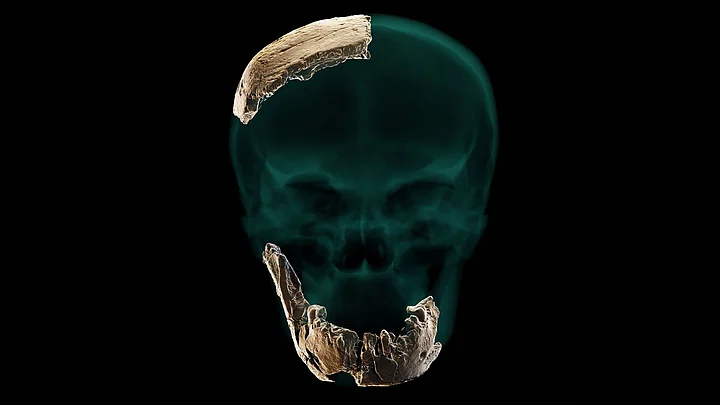Scientists in Tel Aviv, Israel, said on Thursday, 24 June, that they have discovered a new type of early human after studying pieces of fossilised bone dug up at a cement plant site in central Israel, Reuters reported. The newly discovered group has been named ‘Novo Ramla Homo’.
They found fragments of a skull and lower jaw with teeth, which date back to about 1,30,000 years ago. The discovery could make us rethink parts of the human family tree as we know it, said the researchers from the Tel Aviv University and the Hebrew University of Jerusalem.
Nesher Ramla Had Very Large Teeth And No Chin
The remains are believed to represent one of the “last survivors” of a very ancient human group, BBC reported. The study added that they had very large teeth and no chin, and may have been ancestors of the Neanderthals, which poses a challenge to the belief that they originated in Europe, Reuters reported.
Israel Hershkovitz, one of the leaders of the team that analysed the remains, has said that the discovery of a new type of Homo is of “great scientific importance”.
“It enables us to make new sense of previously found human fossils, add another piece to the puzzle of human evolution, and understand the migrations of humans in the old world.”Israel Hershkovitz, Tel Aviv University
Nesher Ramla Resembles pre-Neanderthal Groups From Europe
The team of researchers believes that early members of the Nesher Ramla Homo group were already present in the Near East around 4,00,000 years ago. Excavators found the fragments about 25 feet (eight metres) deep along with stone tools and bones of horses and deer. The study said that the Nesher Ramla Homo has a resemblance to pre-Neanderthal groups that existed in Europe.
“This is what makes us suggest that this Nesher Ramla group is actually a large group that started very early in time and are the source of the European Neanderthal.”Hila May, physical anthropologist, Dan David Center and Shmunis Institute, Tel Aviv University, quoted by Reuters.
May further was quoted by Reuters as saying that Nesher Ramla Homo group could be the reason why experts have never been able to completely explain the presence of Homo Sapiens genes in the earlier Neanderthal population in Europe.
The skull was flat, and the jaw bone had no chin. A 3D shape analysis later eliminated the possibility of it being related to any other known group.
May said that the remains matched a small number of enigmatic human fossils found elsewhere in Israel that anthropologists were never able to place. These dated back even earlier.
“As a crossroad between Africa, Europe and Asia, the land of Israel served as a melting pot where different human populations mixed with one another, to later spread throughout the Old World.”Dr Rachel Sarig, Tel Aviv University, quoted by Reuters
Nesher Ramla Co-Existed With Homo Sapiens, Made Similar Tools
‘Nesher Ramla Homo’ gets its name from a place southeast of Tel Aviv, where it was found. Findings suggest that these early humans may have lived alongside Homo sapiens for over 100,000 years, and may even have interbred.
“Nesher Ramla is important in confirming yet further that different species co-existed alongside each other in the region at the time and now we have the same story in western Asia.”Prof Chris Stringer, Natural History Museum, London, quoted by BBC.
An analysis by Dr Yossi Zaidner at the Hebrew University, who found the remains while exploring the mining area of the Nesher cement plant near Ramla city, suggests that the tools found were constructed in the same way that modern humans of that time made theirs, BBC reported.
“It was a surprise that archaic humans were using tools normally associated with Homo Sapiens. This suggests that there had been interactions between the two groups.”Dr Yossi Zaidner, quoted by BBC.
(With inputs from Reuters and BBC.)
(At The Quint, we question everything. Play an active role in shaping our journalism by becoming a member today.)
